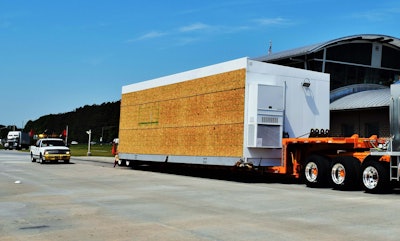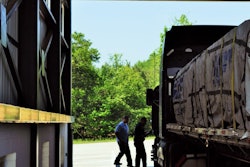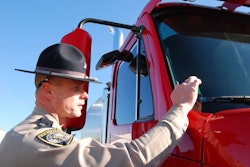
It well seems to have been the recent experience of Calvin Dahl, owner of a manufactured housing dealer in Washington State who transports units to customers with three mobile home toters, also utilizing some light-duty trucks as well. Dahl says that, “80 percent of the time I’m inspected,” inspectors find a violation, and sometimes it rises to the level of an out-of-service violation.
Because Dahl and company haul oversize homes, “we are a big target,” he believes. “My problem is that I only get pulled over for violations,” usually something related to the equipment that’s visible, “and it’s rare that they give me a no-violation inspection. When we go into the scale house to ask for an inspection, they claim they are too busy.”
That’s particularly common in the states highlighted in the map above, from our annual CSA’s Data Trail analysis — based on 2016 calendar-year data (truck enforcement patterns shift very slowly, and many of the above states have been on this list for their very low percentage of clean inspections for years). Some states, including some with reputations for otherwise tough enforcement like California, are much better than these on “finishing the job” on clean inspections, as you can see in the map below highlighting high-percentage states, where violation-free inspections are most common:
As regular readers know, the only ways to improve the record in the algorithm that underpins the CSA scoring program, though carriers’ scoring-category percentile rankings are no longer a matter of perfectly public record, is for time to go by, thus reducing the weight of incurred violations in the scoring without new violations, or to get clean, violation-free inspections, offsetting some of the harm with clean marks. What Dahl suggests here is something I’ve heard before — just by the nature of the oversize operation, the carrier is more likely to be watched closely, its visibility highly enhanced, to use the sometime parlance of the digital freight broker talking about truck tracking. Those visible-to-the-eye-from-a-distance violations (lights, tires …) are thus more likely to garner the attention of inspectors. Those of you who’ve done both oversize/overweight and general freight — have you found that to be true?
Dahl notes his company’s crossed hundreds of scales “without being asked to pull over because they see a violation,” he says. If the system somehow accounted for those clean pass-throughs, “then my rating would be more accurate,” not showing such a high number of inspections with violations.
Counting such pass-throughs is in fact on the radar of enforcement authorities — the Commercial Vehicle Safety Alliance’s new-ish “Level 8” electronic inspection definition has been codified as a North American standard, greasing the skids for doing basically expedited Level 3 (driver-only) inspections as the truck rolls through, with credit for no violations, and opportunity to automate some violation issuing. CVSA’s Collin Mooney confirms that no state is currently doing these on any routine basis as electronic infrastructure to do them is simply not in place widely.
Participating in such a program, of course, will come with tradeoffs for carriers — it will require the wireless transmission of driver logs, ultimately, and given the exact recording in ELDs and problems that’s been raising for some haulers during inspection (stay tuned for more on that subject), that could be a fount of ticky-tack violations indeed.
Ultimately, speaking of his current operation, “the main rub for me is that they only inspect when they can write a ticket or find a violation,” Dahl says. “If they count the hundreds of times we cross the scales without being asked to pull over because they see a violation, then my rating would be more accurate and not so high of a ratio of violations v. [clean] stops. I feel it is not a fair system.”











